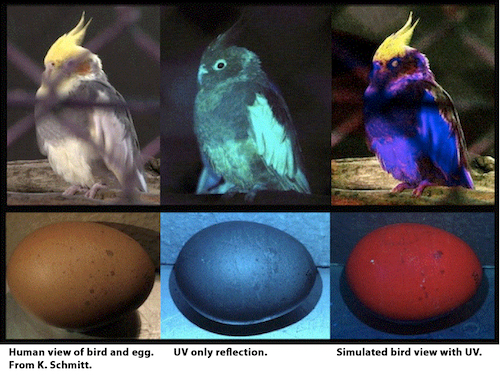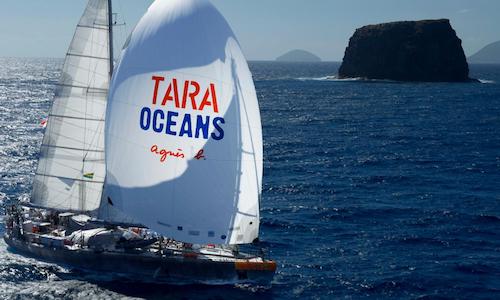Examples of my work at Finch Therapeutics unfortunately can’t be published online. Instead, enjoy a tasty selection of papers from my undergrad. If you’d like to talk about what I do at Finch, please reach out.
Senior Thesis
Predicting the influence of stochastic and deterministic variables on hydrothermal vent communities after eruptions
 In this paper, I examine the stochastic and deterministic factors which effect the assembly of microbial communities in hydrothermal events after eruptions. Despite the critical ecological roles of microbial biofilms in hydrothermal ecosystems, many factors limit data collection in these ecosystems and therefore few studies on microbial succession have been conducted in hydrothermal vents. The unique geochemical and biogeographic context of the hydrothermal seafloor required that I address the effects of competition, dispersal, vent fluid geochemistry, mechanical disruption, and other factors in order to build a conceptual model for predicting compositional stochasticity (CS) immediately after an eruption occurs. I predict that a large reduction in competition for limiting nutrients, which would normally prevent incursions by stochastically introduced organisms, increases after an eruption removes existing biomass and immerses the eruption site in nutrient-rich fluids with a potentially novel makeup. This opportunity for stochastic community assembly is suppressed by context-specific limits on dispersal selecting certain species as colonists of the eruption site. The balance between stochastic and deterministic factors predicts both the immediate post-eruption stochasticity and the community’s long-term stability due to deterministically assembled communities engaging in competition that prevents further colonization of the site. This framework may be used to guide experimental design based on specific hydrothermal locations or as the basis for further theories about why communities change over time in a hydrothermal context. Read the paper
In this paper, I examine the stochastic and deterministic factors which effect the assembly of microbial communities in hydrothermal events after eruptions. Despite the critical ecological roles of microbial biofilms in hydrothermal ecosystems, many factors limit data collection in these ecosystems and therefore few studies on microbial succession have been conducted in hydrothermal vents. The unique geochemical and biogeographic context of the hydrothermal seafloor required that I address the effects of competition, dispersal, vent fluid geochemistry, mechanical disruption, and other factors in order to build a conceptual model for predicting compositional stochasticity (CS) immediately after an eruption occurs. I predict that a large reduction in competition for limiting nutrients, which would normally prevent incursions by stochastically introduced organisms, increases after an eruption removes existing biomass and immerses the eruption site in nutrient-rich fluids with a potentially novel makeup. This opportunity for stochastic community assembly is suppressed by context-specific limits on dispersal selecting certain species as colonists of the eruption site. The balance between stochastic and deterministic factors predicts both the immediate post-eruption stochasticity and the community’s long-term stability due to deterministically assembled communities engaging in competition that prevents further colonization of the site. This framework may be used to guide experimental design based on specific hydrothermal locations or as the basis for further theories about why communities change over time in a hydrothermal context. Read the paper
Single nucleotide substitutions and diverse ecological contexts enable multiple re-emergences and fixation of ultraviolet sensitive vision in birds
 Variation in the spectral sensitivity of vertebrate eye pigments influences sensitivity certain wavelengths of light, a physiological effect with evolution implications in many environmental and biotic contexts. The phylogenetic distribution of ultraviolet sensitive (UVS) and violet sensitive (VS) opsins in bird species is a fascinating narrative, with dozens of parallel re-emergences and transitions between UVS and VS states across bird species. In this paper, I summarize how many bird species’ dependence on vision for mate selection, predator evasion, foraging, and other behaviors exerts strong selective pressures on visual opsin proteins. In conjunction with extremely low physiological barriers to UVS/VS transitions and the diverse range of ecological niches occupied by bird species, these selective pressures have enabled the complex distribution of UVS vision observed in modern birds. Is it possible that the context-specific ability to transition between UVS and VS at a species level is itself an adaptive feature, present across many birds species?
Variation in the spectral sensitivity of vertebrate eye pigments influences sensitivity certain wavelengths of light, a physiological effect with evolution implications in many environmental and biotic contexts. The phylogenetic distribution of ultraviolet sensitive (UVS) and violet sensitive (VS) opsins in bird species is a fascinating narrative, with dozens of parallel re-emergences and transitions between UVS and VS states across bird species. In this paper, I summarize how many bird species’ dependence on vision for mate selection, predator evasion, foraging, and other behaviors exerts strong selective pressures on visual opsin proteins. In conjunction with extremely low physiological barriers to UVS/VS transitions and the diverse range of ecological niches occupied by bird species, these selective pressures have enabled the complex distribution of UVS vision observed in modern birds. Is it possible that the context-specific ability to transition between UVS and VS at a species level is itself an adaptive feature, present across many birds species?
Read the paper
Metagenomic SNV profile analysis of selective pressures on a North Pacific marine microbial population
 The composition and evolution of marine microbial communities is due in part to interactions between populations with specific metabolic and adaptive requirements and environmental features of oceanic regions occupied by the microbial population. To study these interactions, I conducted a SNV profile analysis of oceanic metagenomes from the TARA Oceans Project. The TARA Oceans project represents a collection of metagenomic and physiochemical data from marine environments around the world. My analysis of the SNV profiles of specific populations in the TARA datasets allowed me to quantify the presence, strength, and source of selective pressures on these microbial populations. I hypothesized that the combination of nitrate and oxygen deficiency in the North Pacific deep chlorophyll maximum layer would allow sulfur-oxidizing bacteria to flourish and diversify alongside photoautotrophs. I assembled SNV profiles of genomes extracted from metagenomic data and attempted to classify sources of variation in the profiles according to site-specific metadata. Despite observed lack of sulfur and nitrogen oxidizing microbes, I discovered the presence of genetically variable Prochlorococcus populations coexisting as the result of a clonal bloom. The source of this bloom remains unidentified and merits further investigation into the microbial populations of this region.
The composition and evolution of marine microbial communities is due in part to interactions between populations with specific metabolic and adaptive requirements and environmental features of oceanic regions occupied by the microbial population. To study these interactions, I conducted a SNV profile analysis of oceanic metagenomes from the TARA Oceans Project. The TARA Oceans project represents a collection of metagenomic and physiochemical data from marine environments around the world. My analysis of the SNV profiles of specific populations in the TARA datasets allowed me to quantify the presence, strength, and source of selective pressures on these microbial populations. I hypothesized that the combination of nitrate and oxygen deficiency in the North Pacific deep chlorophyll maximum layer would allow sulfur-oxidizing bacteria to flourish and diversify alongside photoautotrophs. I assembled SNV profiles of genomes extracted from metagenomic data and attempted to classify sources of variation in the profiles according to site-specific metadata. Despite observed lack of sulfur and nitrogen oxidizing microbes, I discovered the presence of genetically variable Prochlorococcus populations coexisting as the result of a clonal bloom. The source of this bloom remains unidentified and merits further investigation into the microbial populations of this region.
Read the paper
